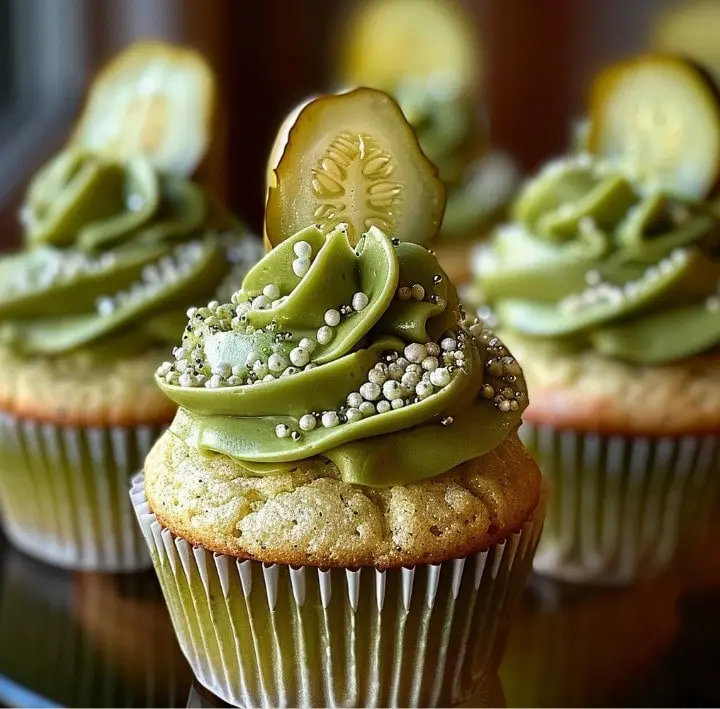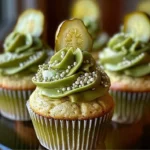Easter is a time of joy, family gatherings, and, of course, chocolate. Among the myriad of sweet treats, Reese’s Eggs stand out as a seasonal favorite. These chocolate-covered peanut butter eggs have become synonymous with Easter celebrations, offering a perfect blend of creamy peanut butter and rich chocolate. However, the joy of making these treats at home adds a personal touch to the holiday festivities, transforming them into something even more special.
Making Homemade Reese’s Eggs is not just about recreating a beloved candy; it’s about starting a new Easter tradition. The process is simple, requiring basic ingredients and kitchen tools, and the result is a batch of decadent eggs that surpasses the store-bought version in both taste and personal value. By choosing to make these eggs at home, you ensure a fresher, customizable treat that can be adapted to suit any dietary need or preference.
The advantages of homemade over store-bought are numerous. Not only do you control the quality of ingredients—opting for organic peanut butter or high-quality chocolate, for example—but you also have the freedom to experiment with flavors and coatings. Whether you’re making these for a family gathering or as a festive gift, Homemade Reese’s Eggs embody the spirit of Easter: renewal, joy, and the warmth of shared experiences. For those interested in the origins of this delightful treat, exploring the History of Reese’s can provide fascinating insights into its popularity.
In embracing the tradition of making Reese’s Eggs at home, you’re not just crafting a delicious Easter treat; you’re creating memories that will last a lifetime. As we delve into the specifics of ingredients, preparation, and customization, remember that the essence of this activity lies in the joy it brings to both the maker and the recipients. For more inspiration, Pinterest offers a wealth of Recipe Inspirations to spark your creativity and elevate your Easter celebration.
Ingredients & Equipment Needed
Creating Homemade Reese’s Eggs requires a simple list of ingredients and basic kitchen equipment. Here’s everything you need to embark on this delicious journey:
- Ingredients:
- 1 cup of creamy peanut butter, ensuring a smooth texture for the filling.
- 1/4 cup unsalted butter, adding richness to the peanut butter mixture.
- 1/4 cup brown sugar, to sweeten and enhance the flavor profile.
- 1 1/4 cups powdered sugar, for the perfect consistency and sweetness.
- 2 cups milk chocolate chips, chosen for their creamy, melt-in-your-mouth quality.
- 2 tablespoons vegetable shortening, to thin the chocolate for a flawless coating.
- Equipment:
- Medium saucepan, for combining and melting the peanut butter mixture ingredients.
- Baking sheet, lined with parchment paper, to set the shaped eggs.
- Microwave-safe bowl, for melting the chocolate chips and shortening.
- Fork, to dip and retrieve the eggs from the chocolate.
For those looking to explore variations, consider substituting the milk chocolate chips with dark chocolate for a richer taste or white chocolate for a sweeter twist. Additionally, adding a pinch of sea salt to the peanut butter mixture can enhance the flavors, creating a delightful contrast between sweet and salty.
When it comes to equipment, ensuring you have the right tools on hand will make the process smoother and more enjoyable. For those interested in the health benefits of peanut butter, a visit to Health Benefits of Peanut Butter on Wikipedia can provide valuable insights. Moreover, for a broader range of Easter treats, Pinterest’s collection of Easter Chocolate Treats offers endless inspiration for your holiday baking.
In summary, with these ingredients and tools, you’re well on your way to creating delicious Homemade Reese’s Eggs that will be the highlight of your Easter celebration. Remember, the key to perfect eggs lies in the quality of ingredients and the joy of making them from scratch.
Step-by-Step Recipe
Preparing the Peanut Butter Mixture
- Begin by combining 1 cup of creamy peanut butter with 1/4 cup of unsalted butter and 1/4 cup of brown sugar in a medium saucepan. Place the saucepan over medium heat, stirring the mixture until the butter melts and the sugar dissolves completely. This process should take about 5 minutes, ensuring a smooth and homogenous mixture.
- Remove the saucepan from the heat. Gradually sift in 1 1/4 cups of powdered sugar, stirring continuously. This step is crucial for achieving the desired consistency of the peanut butter filling. The mixture should be thick enough to hold its shape when molded, yet pliable enough to be easily worked with. If the mixture feels too stiff, a tablespoon of peanut butter can be added to soften it.
Shaping the Eggs
- Once the peanut butter mixture has cooled to room temperature, begin shaping it into egg-like forms. Using a spoon or your hands, scoop out portions of the mixture and roll them into balls. Gently press and shape these balls into ovals, mimicking the shape of an egg. This tactile process not only allows for creative expression but also ensures each egg is unique.
- Place the shaped eggs on a baking sheet lined with parchment paper. This prevents sticking and makes the transfer process easier later on. Once all the eggs are shaped, freeze them for about 1 hour or until firm. Freezing is essential as it solidifies the eggs, making them easier to dip into the melted chocolate without falling apart.
Melting the Chocolate and Coating
- Shortly before removing the eggs from the freezer, prepare the chocolate coating. Combine 2 cups of milk chocolate chips with 2 tablespoons of vegetable shortening in a microwave-safe bowl. Microwave the mixture in 30-second intervals, stirring in between, until the chocolate is completely melted and smooth. The shortening helps thin the chocolate, ensuring a smooth coating that evenly covers the eggs.
- Using a fork, dip each frozen peanut butter egg into the melted chocolate. Gently tap the fork on the edge of the bowl to remove excess chocolate, ensuring a neat finish. Carefully place the coated eggs back onto the parchment paper. This step requires patience and a steady hand, but the result is a beautifully smooth and shiny chocolate shell.
- Allow the chocolate-coated eggs to set at room temperature or refrigerate them for about 30 minutes. As the chocolate hardens, it encases the peanut butter filling in a crisp, chocolatey shell, creating the classic Reese’s Egg texture and taste.
Setting and Serving Suggestions
- Once the chocolate has set, the Homemade Reese’s Eggs are ready to be served. For an added touch, drizzle them with melted white chocolate or sprinkle them with sea salt for a sweet and salty contrast. These eggs can be stored in an airtight container at room temperature for up to a week or refrigerated for longer freshness.
Creating Homemade Reese’s Eggs is a rewarding process that combines simple ingredients and techniques to produce an extraordinary Easter treat. Each step, from preparing the peanut butter mixture to coating the eggs in chocolate, is an opportunity to add a personal touch to this beloved holiday candy.
For those interested in further exploring the art of working with chocolate, Wikipedia’s Chocolate Techniques page offers a wealth of information. Additionally, for more homemade candy ideas, Pinterest’s Homemade Candy Recipes collection can inspire your next confectionery creation.
In conclusion, making Homemade Reese’s Eggs is not just about recreating a popular Easter candy; it’s about embracing the joy of homemade treats and the satisfaction of sharing them with loved ones. With this step-by-step guide, you’re equipped to create a batch of Reese’s Eggs that are sure to impress and delight this Easter season.
Nutritional Information
Understanding the nutritional content of Homemade Reese’s Eggs is crucial for those who are mindful of their diet, especially during the indulgent Easter season. Each egg, depending on its size, is a rich source of energy, primarily from its fat and sugar content. Here’s a breakdown of the nutritional aspects of these homemade treats:
- Calories: A single Homemade Reese’s Egg typically contains approximately 200-250 calories. The majority of these calories come from the high fat content in peanut butter and chocolate, as well as the sugars used to sweeten the mixture.
- Fats: Peanut butter is a good source of monounsaturated and polyunsaturated fats, which are considered heart-healthy fats. However, the addition of milk chocolate and butter increases the saturated fat content, making moderation key when enjoying these eggs.
- Sugars: Both the powdered and brown sugars contribute to the overall sugar content of the eggs. While they are essential for achieving the right taste and texture, they also add to the calorie count and should be consumed in moderation.
- Proteins: Peanut butter is an excellent source of protein, making these eggs a satisfying snack that can help curb hunger and provide energy.
For those interested in a healthier version, consider using dark chocolate, which contains antioxidants and has less sugar than milk chocolate. Additionally, substituting the powdered sugar with a reduced-calorie alternative can lower the overall sugar content.
While Homemade Reese’s Eggs are a delightful treat, being aware of their nutritional content helps in enjoying them responsibly. Balancing indulgence with health-conscious choices ensures that you can partake in the joy of Easter treats without compromising your dietary goals. For more detailed information on the health benefits and nutritional content of peanut butter, the Health Benefits of Peanut Butter article on Wikipedia provides an in-depth look.
In summary, while Homemade Reese’s Eggs are undoubtedly a delicious Easter indulgence, understanding their nutritional profile allows for a more informed and balanced approach to holiday snacking.
Customization and Variations
One of the joys of making Homemade Reese’s Eggs is the ability to customize and experiment with different variations. Whether you’re catering to dietary restrictions or simply looking to add a personal twist, there are numerous ways to adapt this classic recipe. Here are some ideas to inspire your creativity:
- Different Coatings: While milk chocolate is traditional, don’t hesitate to explore other options. Dark chocolate offers a richer, more intense flavor and contains antioxidants. White chocolate, on the other hand, provides a sweeter, creamier alternative. For an extra festive touch, consider using colored candy melts to decorate your eggs for Easter.
- Adding Flavors: Enhance the filling by incorporating additional flavors. A dash of vanilla extract can add depth to the peanut butter mixture, while a sprinkle of sea salt on top of the coated eggs can create a delightful sweet-salty contrast. For a nutty crunch, mix in chopped peanuts or almonds.
- Vegan and Dietary Adaptations: To accommodate dietary preferences, you can easily make vegan Reese’s Eggs by using plant-based peanut butter, dairy-free chocolate, and substituting the butter with coconut oil. For a lower sugar option, consider using sugar-free chocolate and natural sweeteners like stevia in the peanut butter mixture.
These variations not only allow you to tailor the recipe to your taste but also encourage experimentation in the kitchen. For more Easter recipe inspiration, Pinterest’s Vegan Easter Recipes board is a great resource for finding plant-based alternatives. Additionally, exploring the Chocolate Types and Uses article on Wikipedia can broaden your understanding of different chocolates and their culinary applications.
In essence, customizing your Homemade Reese’s Eggs opens up a world of possibilities, allowing you to create a treat that’s uniquely yours. Whether you stick to the classic recipe or venture into new variations, the key is to have fun and enjoy the process.
Storage and Preservation
Proper storage and preservation are key to maintaining the freshness and quality of your Homemade Reese’s Eggs. Whether you’re making them in advance for a gathering or saving leftovers, following these guidelines will ensure your treats remain delicious for as long as possible.
- Room Temperature Storage: Once the chocolate coating has set, the eggs can be stored in an airtight container at room temperature for up to 1 week. Ensure the container is sealed tightly to prevent exposure to air, which can cause the chocolate to bloom or the peanut butter filling to dry out.
- Refrigeration: For longer storage, refrigerating your Reese’s Eggs can extend their freshness. Place them in an airtight container, separating layers with parchment paper to prevent sticking. Refrigerated, they can last up to 3 weeks. However, allow them to come to room temperature before serving to ensure the best flavor and texture.
- Freezing: Freezing is an excellent option for long-term storage. Wrap each egg individually in plastic wrap, then place them in a freezer-safe bag or container. Frozen, they can be enjoyed for up to 3 months. Thaw in the refrigerator overnight or at room temperature for a few hours before enjoying.
Remember, the key to successful storage is minimizing exposure to air and moisture. For those interested in more homemade candy ideas, Pinterest’s Homemade Candy Recipes collection offers a treasure trove of inspiration. Additionally, learning about the History of Easter Eggs can add a layer of tradition and meaning to your Easter candy making.
By following these storage tips, you can enjoy your Homemade Reese’s Eggs at their best, whether you’re savoring them immediately or saving them for later. The joy of homemade treats is not just in the making but also in the sharing and savoring over time.
FAQs
When it comes to making Homemade Reese’s Eggs, several common questions arise. Addressing these FAQs can help ensure your candy-making experience is as smooth and enjoyable as possible.
- Can I use natural peanut butter? Yes, you can use natural peanut butter in this recipe. However, keep in mind that natural peanut butter tends to be oilier and less sweet than its processed counterparts. You may need to adjust the amount of powdered sugar to achieve the desired consistency and sweetness.
- How do I prevent the chocolate from seizing? To prevent chocolate from seizing, avoid introducing any water into the melting process. Ensure all utensils and the bowl are completely dry. If using a double boiler method, make sure no steam escapes into the chocolate. If the chocolate does seize, adding a small amount of vegetable oil can sometimes rescue it.
- Can these be made in advance for events? Absolutely! Homemade Reese’s Eggs are perfect for making ahead of time. Follow the storage and preservation tips mentioned earlier to keep them fresh. They can be made several days in advance and stored at room temperature or refrigerated until the event.
By addressing these frequently asked questions, you can approach making Homemade Reese’s Eggs with confidence, ready to tackle any challenges that come your way. Remember, the key to successful candy making is patience, precision, and a bit of creativity.
Print
Homemade Reese’s Eggs
- Author: Naomi
- Total Time: 1 hour 50 minutes
- Yield: 12 eggs
Description
Indulge in the ultimate Easter treat with these Homemade Reese’s Eggs. Perfectly combining creamy peanut butter and rich milk chocolate, these eggs are a delightful twist on the classic Reese’s Peanut Butter Cups.
Ingredients
Instructions
Notes
- Peanut Butter: For the best texture and flavor, use creamy peanut butter. If using natural peanut butter, you may need to adjust the powdered sugar quantity to achieve the right consistency.
- Chocolate Choice: While milk chocolate is traditional, feel free to experiment with dark or white chocolate for different flavor profiles.
- Freezing Time: Ensure the peanut butter eggs are fully frozen before dipping in chocolate to maintain their shape and make the coating process easier.
- Decorating: Get creative with decorations! Drizzle with different types of chocolate, sprinkle with sea salt, or add festive sprinkles for a colorful touch.
- Storage: Follow the storage guidelines to keep your eggs fresh. They can be a delightful treat long after Easter if stored properly.
- Allergies and Dietary Adjustments: This recipe can be adapted for various dietary needs. Use dairy-free chocolate and substitute butter with coconut oil for a vegan version.
- Prep Time: 20 minutes
- Freeze Time: 30 minutes
- Cook Time: 1 hour
- Category: Dessert
- Cuisine: American










